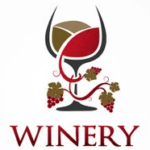Phenolic compounds that occur naturally and are responsible for the red and purple color of many fruits and vegetables, including red grapes.
Anthocyanins (from Ancient Greek ἄνθος (ánthos) 'flower', and κυάνεος/κυανοῦς (kuáneos/kuanoûs) 'dark blue'), also called anthocyans, are water-soluble vacuolar pigments that, depending on their pH, may appear red, purple, blue, or black. In 1835, the German pharmacist Ludwig Clamor Marquart gave the name Anthokyan to a chemical compound that gives flowers a blue color for the first time in his treatise "Die Farben der Blüthen". Food plants rich in anthocyanins include the blueberry, raspberry, black rice, and black soybean, among many others that are red, blue, purple, or black. Some of the colors of autumn leaves are derived from anthocyanins.
Anthocyanins belong to a parent class of molecules called flavonoids synthesized via the phenylpropanoid pathway. They occur in all tissues of higher plants, including leaves, stems, roots, flowers, and fruits. Anthocyanins are derived from anthocyanidins by adding sugars. They are odorless and moderately astringent.
Although approved as food and beverage colorant in the European Union, anthocyanins are not approved for use as a food additive because they have not been verified as safe when used as food or supplement ingredients. There is no conclusive evidence that anthocyanins have any effect on human biology or diseases.

 Wineries
Wineries